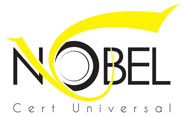ISO/IEC 20000 is the first internationally recognized standard for an IT Service Management System (ITSMS). It’s split into two parts: ISO/IEC 20000-1 outlines the minimum requirements and ISO/IEC 20000-2 which provides additional guidance to help you with implementation.
How ISO/IEC 20000 works and what it delivers for you and your company
ISO/IEC 20000 is a business improvement tool that can help you build a resilient IT service management system that not only adapts to fast-changing technologies but ensures you align to business objectives to deliver results. It’s a great way to demonstrate you consistently deliver a high quality service and gives you a competitive advantage to attract new business.
ISO/IEC 20000 makes sure that you work with stakeholders to have the best IT services in place, which are regularly monitored, tested and enhanced over time. By reviewing processes at regular intervals, you will identify opportunities for improvement and deliver a better service to your customers.
The IT Infrastructure Library (ITIL) is accepted all over the world as a de facto reference for best practice processes in IT Service Management. Inherently, because ITIL is a framework and not a standard, showing compliance with ITIL is impossible for service providers3. This changed in the year 2000 when a formally documented standard became available. It was BSI (the British Standards Institution) who officially determined the
requirements for the effective delivery of services to the business and its customers in a British Standard: BS 15000.
The first edition of BS 15000 was published in November 2000, based on an earlier publication – DISC PD0005: 1998 – the Code of Practice for IT Service Management. BS 15000-1:2002 became the second edition, which was the result of experience and feedback from early adopters of the first edition. The development of a certification strategy gave a major boost to the acceptance of BS 15000 as a formal standard.
On 15 December 2005, ISO, the International Organization for Standardization, accepted BS 15000 as an international ISO standard: ISO/IEC 20000:2005, the first edition of the standard.
ISO/IEC 20000 contributions
The ISO/IEC 20000 standard is being adopted globally by hundreds of companies and organizations6. Many service providers operating in a commercial environment are using the certification as a marketing advantage. Others are using the standard as a vehicle to show their customers that quality
services are important to them. Below is a list of situations where the use of the ISO/IEC 20000 standard can provide a valuable contribution.
- For customers who are comparing service providers: ISO/IEC 20000 provides uniform and common language as well as a standard for benchmarking
- For customers who are selecting a service provider: an ISO/ IEC 20000 certified service provider can express added value when offering its services and can distinguish itself from its competition.
- For customers and service providers who are looking for a norm for reliable and available quality services
- For customers and service providers who are looking for ways to shorten the time-to-market of their products and/or services
- For customers and service providers who are seeking for increased transparency of costs of service provisioning and of total cost of ownership (TCO) and the associated risks
- For service providers who are looking for ways to better understand the needs of the customer. ISO/IEC 20000 can be a norm to improve IT governance
- For service providers who are looking for ways to boost their professional image and increase staff morale
- For service providers who desire to become more responsive and shorten their response times in response to their customer’s needs
- For service providers who need guidance on determining which IT Service Management best practices to focus on first
- For service providers who are adopting industry best practices to improve the effectiveness and efficiency of their performance
- For service providers who are in need of a “tool” to initiate, revitalize and/or boost an IT Service Management improvement endeavor
- For service providers who are looking for ways to implement changes faster and more effectively
- For service providers who need alignment between a broad range of quality improvement to be implemented in parallel
- For service providers who are looking for ways to improve their sourcing success rate through well-aligned process interfaces and common and consistent language
- For suppliers who are looking for a better alignment of their services and processes with their customer’s services and processes
ISO/IEC 20000 benefits
There are many benefits of being certified or simply using the standard even when not seeking certification. Below are a few examples.
- To qualify for new customers: more and more companies and organizations consider ISO/IEC 20000 certification an essential requirement for conducting business with a new vendor or supplier
- To enter global markets: the ISO/IEC 20000 standards are widely recognized
- To objectively measure compliance with an international quality standard for ITSM
- To have better information available for numerous purposes
- To streamline various process improvements that may go on simultaneously in the service provider’s organization
- To provide guidance on prioritizing the best practices to be implemented
- To give a service provider a competitive edge
- To show a drive for quality services
- To objectively assess and benchmark the service provider’s level of maturity
- To increase customer focus and transparency of value provided to the business
- To establish a culture of continual improvement in IT
- To boost the morale and professional image of the service provider’s staff
